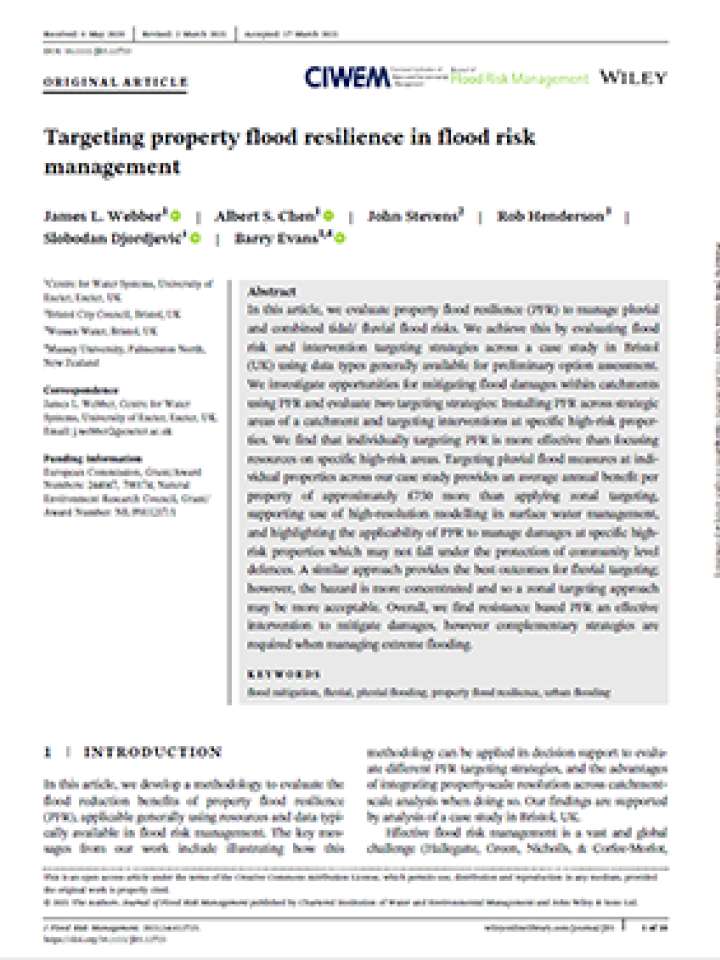Targeting property flood resilience in flood risk management
In this article, it evaluates property flood resilience (PFR) to manage pluvial and combined tidal/ fluvial flood risks. It achieves this by evaluating flood risk and intervention targeting strategies across a case study in Bristol (UK) using data types generally available for preliminary option assessment.
It investigates opportunities for mitigating flood damages within catchments using PFR and evaluate two targeting strategies: Installing PFR across strategic areas of a catchment and targeting interventions at specific high-risk properties. It finds that individually targeting PFR is more effective than focusing resources on specific high-risk areas. Targeting pluvial flood measures at individual properties across our case study provides an average annual benefit per property of approximately £750 more than applying zonal targeting, supporting use of high-resolution modelling in surface water management, and highlighting the applicability of PFR to manage damages at specific high-risk properties which may not fall under the protection of community level defences.
A similar approach provides the best outcomes for fluvial targeting; however, the hazard is more concentrated and so a zonal targeting approach may be more acceptable. Overall, it finds resistance based PFR an effective intervention to mitigate damages, however complementary strategies are required when managing extreme flooding.
Explore further

